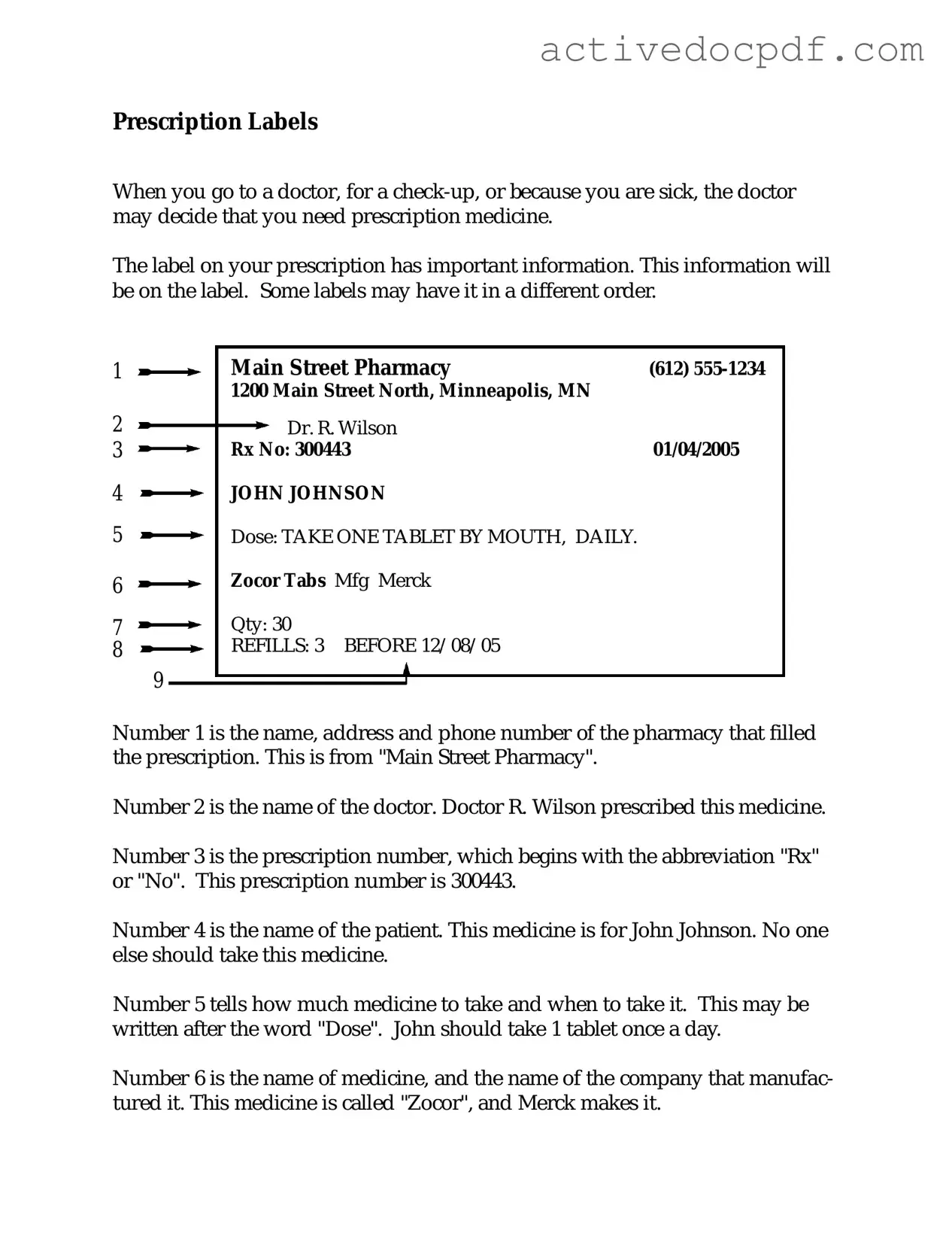The Prescription Label form is a document that provides essential information about a prescribed medication. It typically includes details such as the patient's name, the prescribing physician's information, the medication's name, dosage instructions, and any special instructions for use. This form serves as a guide for patients and pharmacists, ensuring that medications are taken correctly and safely.
This form plays a crucial role in medication management. It helps prevent medication errors by ensuring that patients understand how to take their medications. Additionally, it provides vital information for pharmacists to verify prescriptions, ensuring that the right medication is dispensed to the right person. Proper labeling can also alert patients to potential side effects and interactions with other drugs.
A typical Prescription Label form contains several key pieces of information, including:
-
Patient's name and address
-
Prescribing physician's name and contact information
-
Name of the medication
-
Dosage and administration instructions
-
Quantity of medication dispensed
-
Refill information
-
Pharmacy name and contact details
-
Expiration date
This comprehensive information ensures that patients have all the necessary details to use their medications effectively.
Reading a Prescription Label form can be straightforward if you know what to look for. Start by identifying your name and the medication prescribed. Next, check the dosage instructions, which will tell you how much to take and how often. Pay attention to any special instructions, such as whether to take the medication with food or if there are specific activities to avoid while using it. If you have any questions or uncertainties, do not hesitate to consult your pharmacist or healthcare provider for clarification.
If you notice any discrepancies on the Prescription Label form, it is vital to address them immediately. Contact your pharmacist or healthcare provider as soon as possible. They can verify the prescription details and make any necessary corrections. It is essential to ensure that you have the correct information to avoid potential health risks associated with taking the wrong medication or dosage.
Generally, a Prescription Label form is specifically designed for prescription medications. Over-the-counter (OTC) medications do not require a prescription and thus do not come with a Prescription Label form. However, OTC medications may still have their own labeling, providing important information such as dosage, active ingredients, and warnings. Always read the label on OTC products carefully to ensure safe usage.
